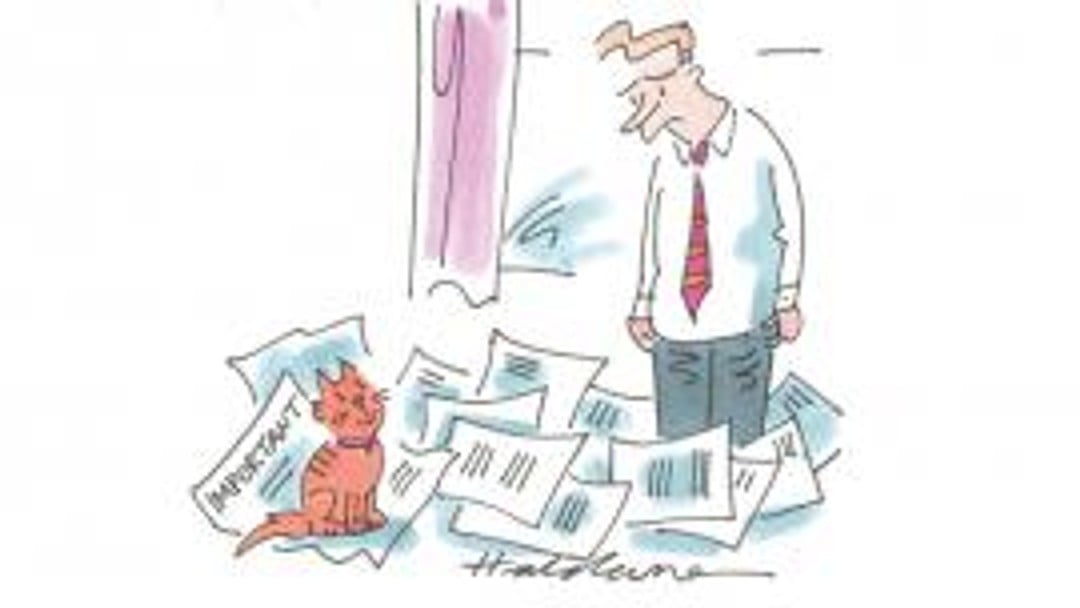Floored by paper

Digitising documents sounds a great idea until you realise you can't really flick through a bundle on screen, says Richard Barr
Leading Counsel’s room was vast. It could have been impressive too had it not been for the wall-to-wall paper on the floor.
The only way of getting to the desk to start the conference was to walk over the piles of paper which made the same crackling noise as autumn leaves but were less romantic, and there was no gentle smell of smoke.
They were the core documents in a case that we were running in the High Court and, so far as I could see, several others; and the QC had spread them out in an effort, I assume, to work out what it was all about.
Anyone visiting the Royal Courts of Justice will still see struggling clerks wheeling sack barrows of lever arch files. Many trees die daily to feed this unending demand.
I have fought a losing battle with paper all my working life. Now that I work at home permanently have things changed?
Years ago I invested in a high volume scanner and I am often to be found digitising any piece of paper that dares to flutter into the house.
Even though piles of invoices, credit card statements and unpaid water bills have been safely scanned, then destroyed, the paper mountain never diminishes, because our loyal postman keeps bringing us more.
When HMCTS announced reforms intended to make civil courts entirely paperless I looked forward to innovation that might bring a paper free Nirvana to my efforts.
Yet even with the resources of a government department the task seems no easier, as emphasised in the written submission from the Association of District Judges,
referring to one of the paper- less pilots: “It is not easy to navigate around and does
not allow a user to flick from page to page yet alone document to document. Neither can you bookmark or make notes on it. Its use therefore cannot be contemplated for trial purposes without having a paper bundle.”
Before the digital age, paper was the main means of storing information. It first became widely available in the UK in about 1588 with the establishment of the first commercial paper mill.
By about 1589 I suspect that lawyers up and down the country had started to use paper in large quantities and no doubt by 1600 the first paginated trial bundles had appeared in court, carried there by horse and cart.
Proto-bookmarks
Now extraordinary amounts of data can be put onto something smaller than a postage stamp but you can only see it if it is dis- played on a screen and then only one page at a time unless you are the late Terry Pratchett or a dealer on the stock market.
Both have – or had, in Pratchett’s case – banks of screens in front of them to enable the display of co- pious material, not something we are likely to see in court anytime soon.
Notwithstanding the pronouncements of Darwin I believe that we evolved such a large quantity of fingers to enable us lawyers use them as bookmarks (technically an earlier type of digitisation).
And there lies the fundamental difference between anything that can be done on screen and everything that can be achieved by crawling around on the floor shuffling papers into order and seeking out the little nuggets that make the difference between victory and defeat. It is all to do with surface area and accessibility.
Screens have a limited size which become cluttered and unmanageable if more than a few documents are open at a time.
But floors are limited only by the size of the room and allow immediate access to copious amounts of paper (and data). They remain the best place for sorting medical records and creating court bundles.
The message therefore is clear: spend money on important things – like keeping courts open or making procedures simpler – and abandon paperless.
Instead encourage litigants (and judges) to get down on their knees on the floor of the court whenever documents need to be considered. Who knows, it might encourage a novel form of mediation.
Richard Barr is a consultant solicitor with Scott-Moncrieff & Associates Ltd scomo.com